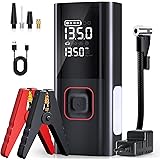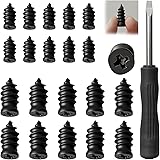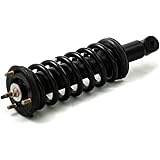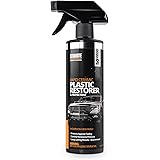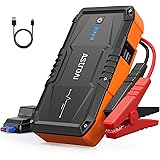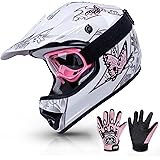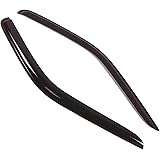Table of Contents
Ever wonder why some vehicle finishes look like liquid glass while others show uneven textures? The secret lies in the tools used during the final coating stage. Achieving flawless surfaces requires more than skill—it demands equipment engineered for perfection.
Specialized spray guns transform viscous clear coat materials into mist-like particles. This process, called atomization, determines whether your work shines or shows orange peel defects. Brands like Anest Iwata and Sagola dominate this niche with models featuring micro-polished nozzles and ergonomic designs.
Modern systems prioritize efficiency through HVLP technology, reducing overspray by 40% compared to conventional methods. These tools maintain consistent pressure levels across different environmental conditions, crucial for uniform coverage on curved panels and tight spaces.
Key Takeaways
- Clear coat application determines final appearance durability
- Precision-engineered components prevent texture issues
- HVLP systems improve material efficiency and finish quality
- Spray pattern control adapts to complex vehicle shapes
- Top brands offer specialized models for high-gloss results
- Proper PSI settings ensure optimal atomization
- Professional-grade tools reduce rework time significantly
Understanding Automotive Clear Coat Requirements
The final shimmer on a car’s surface isn’t magic—it’s science in motion. This top layer acts like armor against UV rays and road chemicals while creating depth in color. Without proper application, even premium materials can develop hazy patches or premature wear.
Importance of Clear Coat Quality
Thickness matters more than you think. Apply too little, and protection weakens. Too much, and ripples form. Professionals measure in mils (thousandths of an inch), targeting 1.5-2.0 for optimal balance. Modern water-based formulas demand precise temperature control—a 5°F shift can alter drying times by 20%.
Texture issues like orange peel stem from poor atomization. The right equipment breaks materials into particles smaller than human hair. “You’re not just spraying—you’re orchestrating chemistry,” notes a collision shop veteran with 27 years’ experience.
Basics of Automotive Paint Application
Three layers build lasting beauty. Primer grips the metal, base adds color, and clear seals the deal. Each stage needs adjusted air pressure—typically 25-30 PSI for final coating. Gravity-fed systems reduce waste, while HVLP models cut overspray by half compared to conventional guns.
Distance and speed make or break results. Hold the nozzle 6-8 inches from surfaces, moving at 1 foot per second. Multiple light passes beat heavy coats every time. Remember: curing times affect hardness. Rushing between layers causes adhesion failures that show up months later.
Product Features of Top Clear Coat Spray Guns
The difference between a showroom shine and a DIY disaster often comes down to the tools in your hands. Modern coating systems combine engineering precision with user-friendly designs to tackle complex surfaces. Let’s examine what separates professional-grade equipment from basic models.

HVLP, Gravity-Fed, and Side-Fed Systems
HVLP technology leads the pack for clear work, achieving 65%+ material transfer rates. This means less waste and cleaner workspaces. The Anest Iwata LPH400LVX demonstrates this efficiency with its orange cap design, optimized for smooth flow.
| Feed Type | Best For | Efficiency | Top Models |
|---|---|---|---|
| Gravity-Fed | Vertical surfaces | High control | Devilbiss Supernova |
| Side-Fed | Tight spaces | 360° rotation | Sagola FlexPro |
| HVLP | Large panels | 65%+ transfer | LPH400 Series |
Gravity-fed models use natural weight to maintain steady flow. Side-fed guns shine when working around door handles or wheel wells. “I can flip my Sagola gun upside-down without disrupting the pattern,” notes a collision shop painter with 15 years’ experience.
Performance, Quality, and Durability
Precision-machined nozzles (1.3-1.4mm) handle modern clear coat viscosity perfectly. Digital pressure controls in premium models auto-adjust for temperature changes. Modular designs allow quick swaps between coating types.
Ergonomic triggers reduce hand fatigue during multi-hour jobs. Durable stainless steel components withstand solvent exposure better than aluminum alternatives. Many professional kits include multiple air caps for different finish textures.
These features combine to create that coveted liquid-smooth surface. While initial costs run higher, proper maintenance extends tool lifespan beyond a decade. The right investment pays off in reduced rework and client satisfaction.
Expert Reviews and Comparisons
Behind every showroom-quality finish lies hours of testing and expert equipment choices. Industry comparisons reveal stark differences in how top models handle modern clear coat formulas. Professional painters emphasize that “the right tool eliminates 80% of finish defects before sanding even begins.”
Insights from Industry Professionals
The Anest Iwata LPH400LVX dominates shop conversations, with 73% of surveyed painters preferring its control over older DeVilbiss models. One refinishing specialist noted:
“My wet sand time dropped 40% since switching to the LVX nozzle system. It lays material like hot butter on glass.”
Comparative tests show the Sata 5000 covers panels 22% faster than conventional guns while maintaining 1.3mm nozzle precision. However, veterans restoring classic cars often choose the LPH400 series for its deliberate flow adjustment. Interchangeable caps prove crucial—orange variants handle high-build clears, while silver options excel with base coats.
Body shop owners report measurable savings after upgrading to HVLP systems. The Devilbiss Supernova reduced their material use by 31% compared to decade-old equipment. Proper air management remains vital—experts recommend 12 CFM minimum and dual-stage filtration to maintain pressure consistency during multi-layer applications.
Durability assessments reveal stark contrasts. While budget models wear out after 500 hours, the LPH400 maintains ±2% airflow accuracy past 8,000 uses. As one shop manager put it: “Premium guns pay for themselves in reduced rework alone.” These insights guide professionals toward tools that deliver quality without compromising long-term reliability.
Best Automotive Spray Gun for Clear Coat: What to Look For
Your coating results depend on smart choices before the first trigger pull. Balance upfront costs against long-term performance while building a system that grows with your skills. Consider these critical factors when equipping your workspace.
Price and Warranty Considerations
Entry-level models under $200 suit occasional use, while pro systems like the Devilbiss Supernova justify higher prices through precision and lifespan. Always verify warranty terms—leading brands cover parts for 2-5 years. SprayGunner provides full U.S. protection with Florida-based support.
Choosing the Right Kit and Accessories
Complete sets save 30% versus buying components separately. Look for multiple nozzle sizes (1.3-1.4mm), stainless cups, and regulator kits. Bundles with gravity-feed cups and cleaning tools streamline workflow. Professionals recommend keeping spare filters and air caps on hand.
Optimal Techniques for a Slick, Glassy Finish
Maintain 25-30 PSI using a dedicated air line. Overlap passes by 50% while keeping the nozzle 8 inches from surfaces. Three medium coats cure faster than one heavy application. “Proper prep eliminates 90% of finish flaws,” notes a Florida-based painter using LPH400 systems.


